Match the statement in Column I with the statements in Column II. One or more than one choice from ColumnII can match with a statement from Column I.
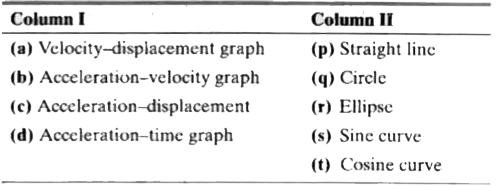
(a) →(q),r),(b)→(q),(r),(c)→(p),(d)→(s),(t)
Topper's Solved these Questions
- OSCILLATIONSBOOK - RESNICK AND HALLIDAYCHAPTER - OSCILLATIONSEXERCISE - Problems
39 Videos
- MOTION IN TWO AND THREE DIMENSIONSBOOK - RESNICK AND HALLIDAYCHAPTER - MOTION IN TWO AND THREE DIMENSIONSEXERCISE - PRACTICE QUESTIONS (MATRIX-MATCH)
10 Videos
- PHOTONS AND MATTER WAVESBOOK - RESNICK AND HALLIDAYCHAPTER - PHOTONS AND MATTER WAVESEXERCISE - PRACTICE QUESTIONS(Integer Type)
4 Videos
Similar Questions
Match the statement in Column I with the statements in Column II. One or more than one choice from Column II can match with a statement from Column I.
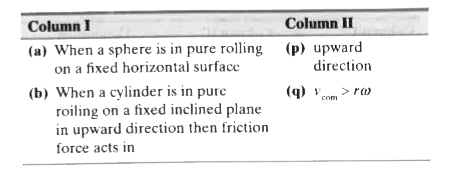
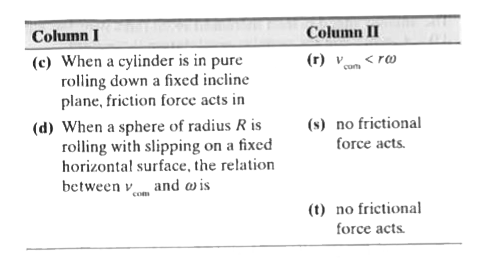
View SolutionMatch the statement in Column I with the statements in Column II. One or more than one choice from Column II can match with a statement from Column I.
Column IColumn II(a)Young's modulus(p)−ΔVρV(b)Bulk modulus(q)FlAΔl(c)Compressibility(r)−Δd/dΔDl/l(d)Poisson's ratio(s)−ρVΔV
View Solution
Knowledge Check
Match the statements in the column I with those in column II.
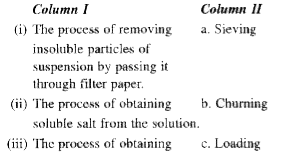
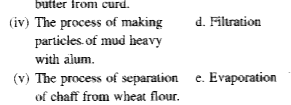 A(i)-e , (ii) - b , (iii)- a , (iv)- c , (v)-dB(i)- d , (ii)- e , (iii) - b , (iv) - c , (v)-aC(i)- e , (ii)-a , (iii)-b , (iv)-c, (v)-dD(i)-b , (ii)-e , (iii)-c , (iv)-a , (v)-d
A(i)-e , (ii) - b , (iii)- a , (iv)- c , (v)-dB(i)- d , (ii)- e , (iii) - b , (iv) - c , (v)-aC(i)- e , (ii)-a , (iii)-b , (iv)-c, (v)-dD(i)-b , (ii)-e , (iii)-c , (iv)-a , (v)-d
Match the statements in Column I with the statements in Column II . One or more than one choice from Column II can match with a statement from Column I.
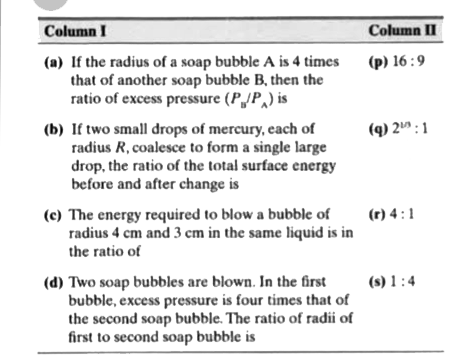
View SolutionMatch the statements in Column I with the properties in Column II. A
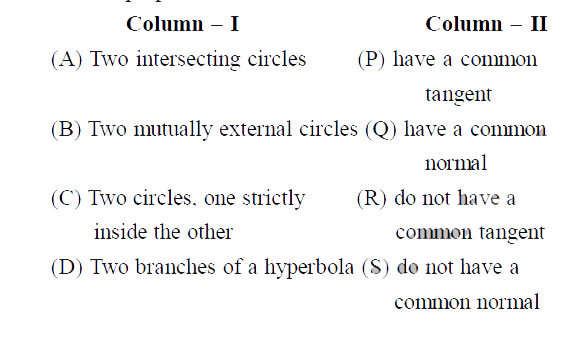
View SolutionMatch the statement of Column I with the values of Column II.
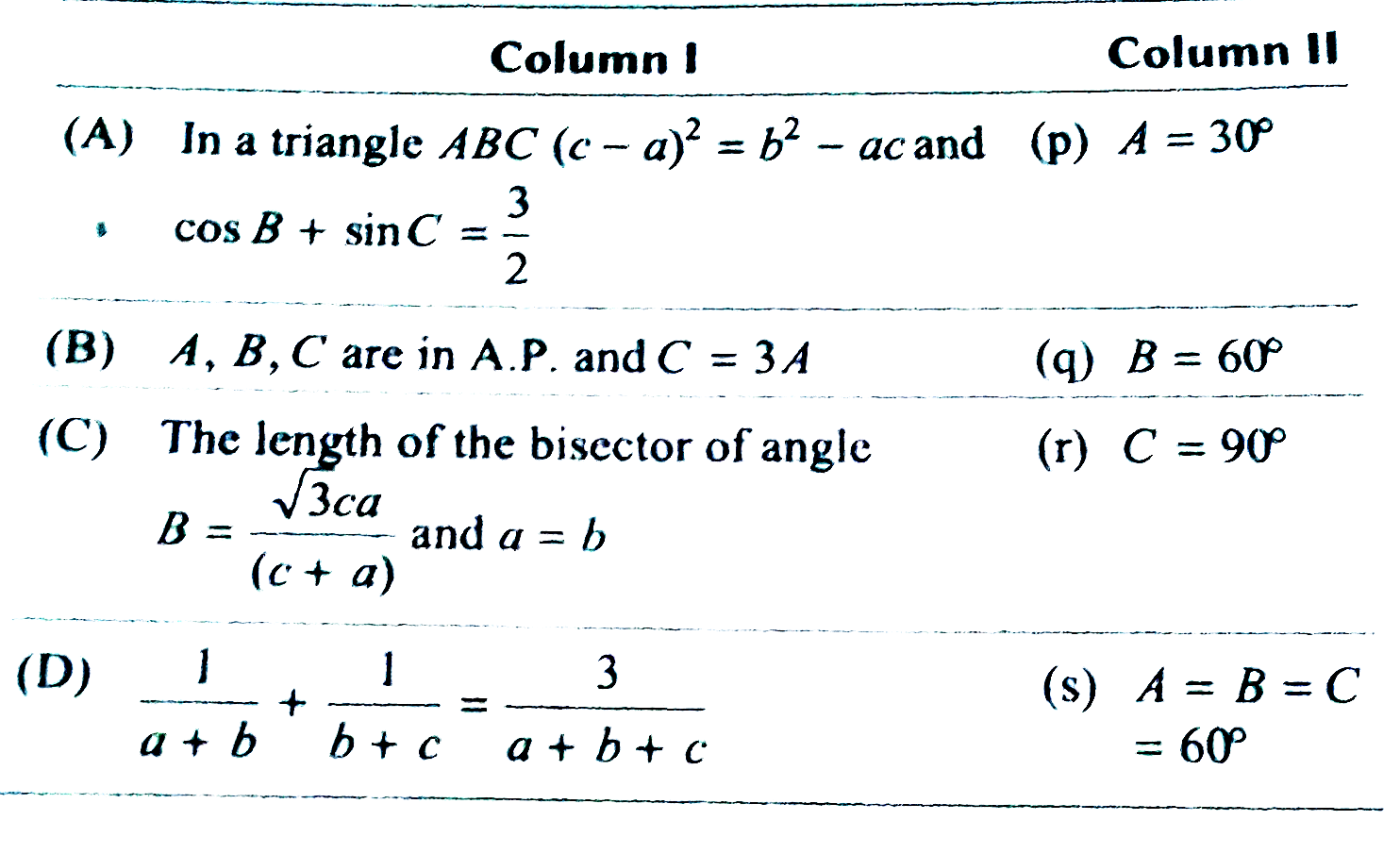
View SolutionMatch the defects given in Column I with the statements in given Column II.
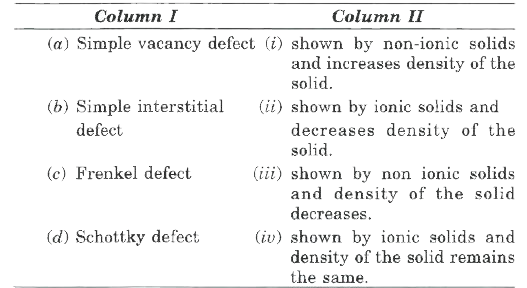
View SolutionMatch the reactions given in Column I with the statements given in Column II

View SolutionMatch the reactions given in Column I with the statements given in Column II

View SolutionMatch the reactions given in Column I with the statements given in Column II.
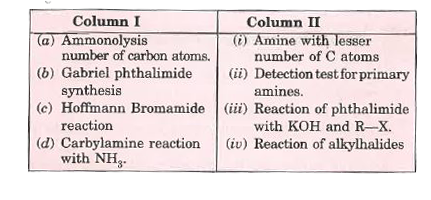
View Solution
